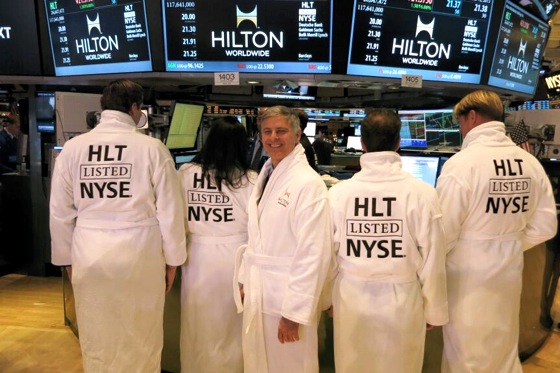Hilton Worldwide stock began trading Thursday above its initial public offering share price at US$21.30 and largely remained above that amount during trading, closing at US$21.50.
Hilton Worldwide, McLean, Virginia, raised about US$2.34 billion in its IPO, having priced shares at US$20 after the market closed Wednesday and Bloomberg reported that according to a person with knowledge of the matter, the sale was nine times oversubscribed.
The IPO generated an US$8.5 billion profit for Hilton’s owner The Blackstone Group, New York City, which took the hotel management company private for US$26 billion in 2007. Blackstone will retain 76% ownership after the IPO and its ownership of the company has been described as a rollercoaster, having been forced into a US$4 billion debt restructuring deal for Hilton in 2010 in the aftermath of the economic downturn. The deal gave Blackstone time to turn around the business and in hindsight paid off profitably.

“No doubt, it’s a tremendous win for Blackstone,” Douglas Weill, managing partner of Hodes Weill & Associates, told Bloomberg.
However despite investor interest, some analysts argued that given Hilton’s current share price now is not the best time for a long-term investment.
“In addition to not viewing valuation for the sector as compelling at present, we’re also concerned that the industry is in the midcycle of a recovery, with year-to-date RevPAR growth trends moderating to the mid-single-digit range (compared with RevPAR growth of over 8% in 2011 and 2010),” Chad Mollman, an equity analyst for Morningstar Equity Research, wrote in a note to investors. “Historically, the strongest returns for lodging stocks are generated when RevPAR growth is accelerating, which typically boosts operating margins and earnings beats. When RevPAR growth is decelerating, operating margins are pressured and companies have a greater tendency to miss earnings estimates.”
